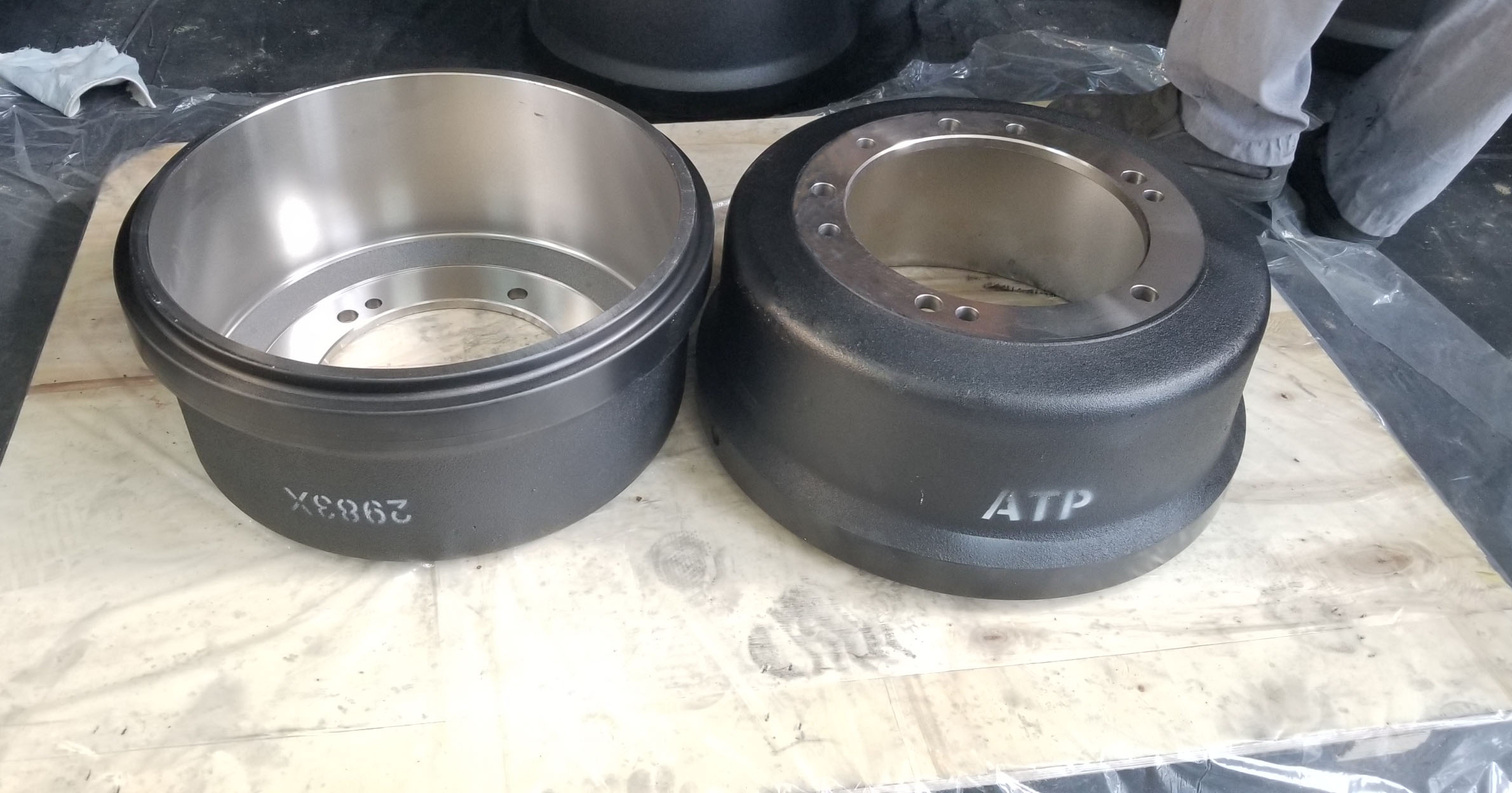
How Hidden Component Failures in Auxiliary Systems Lead to Major Roadway Incidents
Commercial vehicle safety is fundamentally jeopardized not by the dramatic failure of major systems, but by the subtle degradation of small, supporting components. When one seemingly minor part fails such as a seal, valve, or solenoid, it often triggers a disastrous cascade effect. This chain reaction rapidly transfers stress and damage throughout the entire truck assembly, accelerating the destruction of critical, expensive systems and culminating in a severe roadway incident. Managing this pervasive systemic risk requires the heavy-duty transport sector to abandon simplified maintenance views. Fleet safety and operational viability depend on recognizing that every component, from diaphragm & seals to the largest axles, contributes directly to preventing a catastrophic failure.
Addressing these hidden risks is paramount for truck parts manufacturers and fleet operators aiming to reduce downtime and prevent catastrophic failure. A comprehensive risk strategy must treat the commercial vehicle as an interconnected system, where reliability hinges on component quality across every assembly, from the air breaks to the axles. By focusing on certified, high-quality heavy duty truck parts across the entire supply chain, fleet managers can fundamentally safeguard their operations against the unpredictable nature of systemic component failure.
The Imminent Danger of Pneumatic System Collapse
The air system is the lifeline of a modern commercial vehicle, powering everything from braking to suspension. Failures here do not lead to gradual deterioration; they often result in immediate, asymmetrical performance loss, creating a severe control hazard and placing the vehicle and its load in jeopardy.
Systemic risks originating in the pneumatic supply chain include:
- Brake Imbalance and Jackknifing: When internal contaminants, often allowed by inadequate air dryers, obstruct pneumatic flow in brake chambers or control valves, pressure delivery becomes erratic. This leads to asymmetrical braking forces, causing one side of the vehicle to brake harder than the other, which can instantly trigger an uncontrolled skid, resulting in a dangerous jackknife on a busy highway.
- Suspension Failure and Rollover Risk: Components like air springs or their seals that degrade and fail suddenly can cause immediate load shift and suspension collapse on one side of the vehicle. This uneven weight distribution destroys the vehicle’s center of gravity, drastically increasing the risk of a high-speed rollover, particularly during sharp turns or evasive maneuvers.
- Auxiliary Malfunctions and Driver Surprise: A faulty electrical solenoid controlling auxiliary systems can cause unexpected engagement or disengagement, such as an engine brake activating without driver input. This sudden and unpredictable change in vehicle dynamics often surprises the driver, leading to over-correction and subsequent loss of control.
- Delayed Braking Response: Contaminated or degraded brake valves introduce delays into the system's reaction time. In an emergency, even a fraction of a second delay in full brake application—caused by a poor seal or sluggish valve—translates directly into many feet of additional stopping distance, which can be the difference between a near-miss and a fatal collision.
Driveline and Chassis
The chassis and driveline components are under constant torsional and vibrational stress, yet their slow, cumulative failure often goes unnoticed until a rapid, destructive event occurs. The interdependency of these mechanical elements means that a small failure can literally rip the vehicle apart at highway speeds.
Vulnerabilities within the chassis and driveline create physical hazards:
- Fires from Overheated Bearings: Substandard wheel end bearings or center supports quickly generate excessive friction and heat. This thermal runaway can melt wheel-end components or ignite surrounding lubricants and tires, leading to catastrophic vehicle fires that endanger the driver, cargo, and surrounding traffic.
- Catastrophic Driveline Disintegration: Metal fatigue in the axles or u-joints can cause a drive shaft to fracture violently. This projectile failure can severely damage the undercarriage, rupture fuel tanks, or in extreme cases, punch through the cab floor, resulting in an immediate and total loss of propulsion and steering control.
- Braking Inefficiency and Excessive Wear: Worn camshafts disrupt the critical geometry of the brake actuation system, leading to delayed or uneven application of the brake shoes. The driver is forced to compensate, but the underlying issue causes severe strain on brake discs and brake drums, accelerating wear and compromising the system's capacity for subsequent emergency stops.
- Progressive Instability and Handling Drift: Worn bushings or cracked mounts within the suspension parts assembly lead to progressive chassis misalignment. This creates a dangerous condition where the vehicle drifts, sways, and becomes dangerously unpredictable under load, wearing down the fifth wheel and requiring constant steering input that fatigues the driver and masks serious mechanical issues.
Electrification and Loss of Critical Safety Systems
Modern commercial vehicles rely heavily on electronic controls to maintain safety, from driver assistance to basic visibility. The failure of electrical and lighting components poses not only a personal risk to the driver but also a massive external risk to other road users, often contributing to low-visibility incidents.
Electrical systems failures that accelerate risk include:
- Loss of Anti-lock Control: Failure of an electrical sensor or coil that supports the abs breaks system immediately disables anti-lock control. A sudden hard-braking event on a slick road will then result in uncontrolled wheel lockup, guaranteeing a loss of directional control and increasing the likelihood of a rollover or severe skid.
- Invisibility and Rear-End Collision Risk: Degradation in light & bulbs or compromised electric & electrical parts can lead to the total loss of taillights, marker lights, or turn signals. In low visibility or night conditions, this failure turns the truck into an invisible obstacle, drastically increasing the likelihood of a multi-vehicle rear-end collision.
- Visibility Hazards and Blind Spot Driving: Electrical failure in systems powering heated or power-adjustable mirrors and integrated camera systems causes immediate and severe loss of crucial visibility. The driver is forced to navigate massive blind spots, creating a non-negotiable safety hazard during merging or lane-change maneuvers, a major cause of trucking incidents.
- System Contamination and Electrical Fire: Compromised body parts and fairings expose delicate e-vehicle parts and wiring harnesses to moisture, debris, and road salt. This accelerates corrosion and electrical short circuits, leading to a risk of under-dash or chassis electrical fires that can quickly incapacitate the vehicle and endanger the occupants.
Engineered for Total Reliability: All Truck Parts

Mitigating the cascade effect requires a commitment to comprehensive quality assurance, extending beyond the high-profile parts to every single component that constitutes the vehicle's integrity. All Truck Parts Limited (ATP) offers a holistic approach to fleet maintenance, recognizing that sourcing from a single, reliable provider is the most effective defense against systemic failure. With over 20 years of combined experience in the truck and trailer parts industry, ATP has established itself as a leading truck parts manufacturers and truck parts supplier dedicated to high manufacturing quality and ethical standards.
ATP operates globally, providing comprehensive support across America, Europe, Africa, Australia, and China. We are continuously improving our operations, evidenced by our ISO/TS16949 certification, which guarantees quality management and continuous improvement while adhering to environmental best practices. ATP simplifies the sourcing challenge, providing a one-stop solution for truck parts that includes:
- Component Range: ATP offers an unparalleled selection of essential maintenance and performance parts, including high-demand items like slack adjusters, brake discs, brake drums, and break calipers & kits, alongside specialized materials such as hardware kits and diaphragm & seals.
- Engineering and Customization: Supported by advanced engineers, ATP provides strong technical support and quality control. Customized Design and OEM/ODM Services are a cornerstone of their factory capabilities, having supported many large brands for a decade, ensuring components meet exact OEM specifications.
- Value and Assurance: ATP operates with a direct manufacturer advantage, offering highly competitive pricing based on the cost of production, not inflated market value.
Conclusion
The safety of a commercial fleet is a direct function of its least resilient component. A comprehensive risk management strategy must move past focusing solely on singular failure points and recognize the inherent danger posed by systemic vulnerability. By partnering with a truck parts specialist like All Truck Parts, fleet operators gain access to a quality-assured broad spectrum of all truck and trailer parts designed to prevent the cascading failures that lead to costly downtime and catastrophic road incidents. Investing in certified quality across every assembly—from the smallest filters and motor oils to the largest brake expander wheel and structural body parts—is the single most effective strategy for guaranteeing operational safety and longevity.




